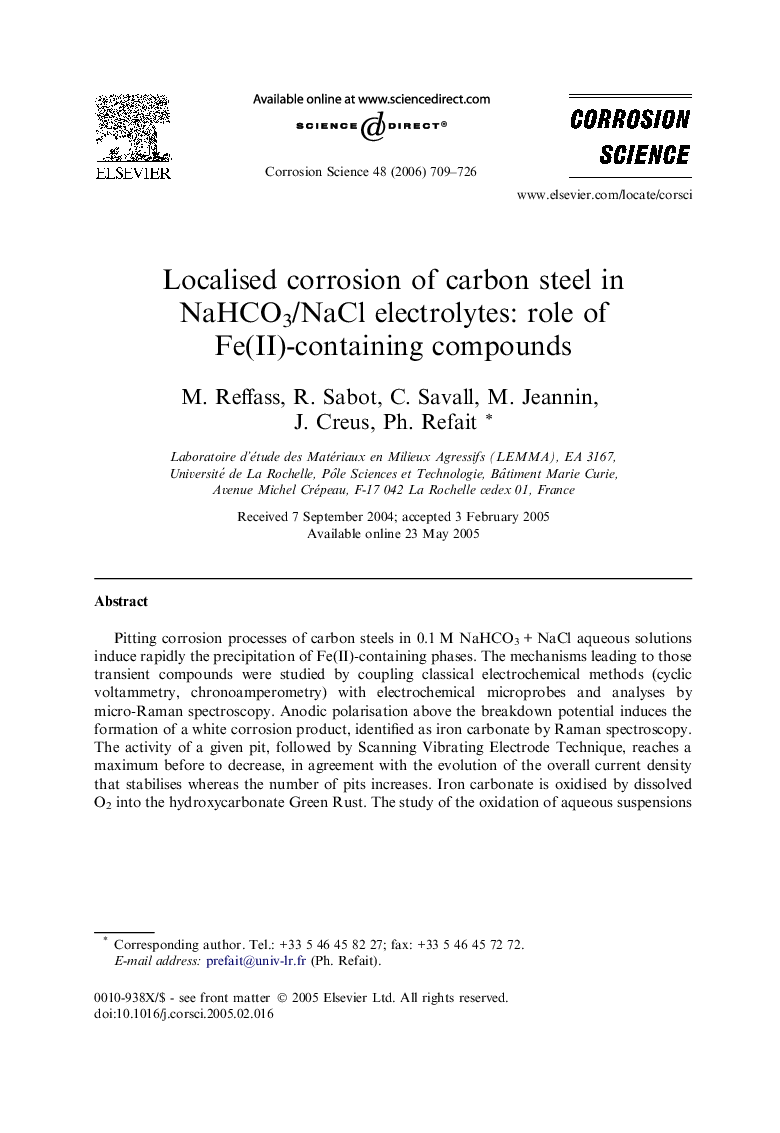| کد مقاله | کد نشریه | سال انتشار | مقاله انگلیسی | نسخه تمام متن |
|---|---|---|---|---|
| 1472575 | 990391 | 2006 | 18 صفحه PDF | دانلود رایگان |

Pitting corrosion processes of carbon steels in 0.1 M NaHCO3 + NaCl aqueous solutions induce rapidly the precipitation of Fe(II)-containing phases. The mechanisms leading to those transient compounds were studied by coupling classical electrochemical methods (cyclic voltammetry, chronoamperometry) with electrochemical microprobes and analyses by micro-Raman spectroscopy. Anodic polarisation above the breakdown potential induces the formation of a white corrosion product, identified as iron carbonate by Raman spectroscopy. The activity of a given pit, followed by Scanning Vibrating Electrode Technique, reaches a maximum before to decrease, in agreement with the evolution of the overall current density that stabilises whereas the number of pits increases. Iron carbonate is oxidised by dissolved O2 into the hydroxycarbonate Green Rust. The study of the oxidation of aqueous suspensions of Fe(II) compounds precipitated from FeCl2 · 4H2O, NaOH and NaHCO3 solutions allowed to clarify the mechanisms, that are governed by the concentration ratios [Feaq2+]/[OH-] and [HCO3-]/[OH-]. The results were confronted to a thermodynamic approach.
Journal: Corrosion Science - Volume 48, Issue 3, March 2006, Pages 709–726